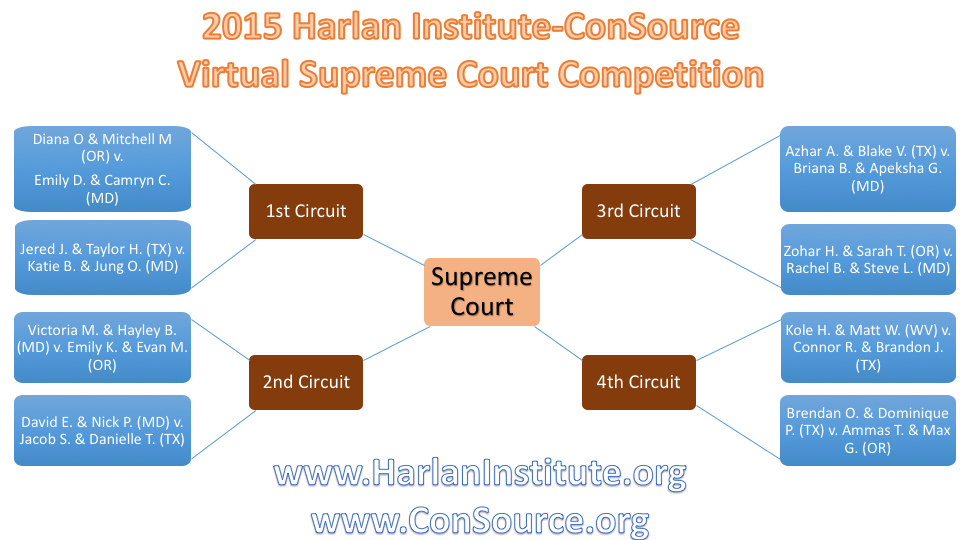In his dissent from denial of certiorari in County of Maricopa v. Lopez-Valenzuela, Justice Thomas, joined by Justice Scalia, pined for the days when the Supreme Court had mandatory jurisdiction when a Circuit Court invalidated a state statute.
In fact, Congress historically required this Court to review any decision of a federal court of appeals holding that a state statute violated the Federal Constitution. 28 U. S. C. §1254(2) (1982 ed.). It was not until 1988 that Congress eliminated that mandatory jurisdiction and gave this Court discretion to review such cases by writ of certiorari. See Pub. Law 100-352, §2, 102 Stat. 662.
Remarkably, in 1982, all nine Justices sent a letter to Rep. Robert Kastenmeier supporting the elimination of mandatory jurisdiction. You can find the letter in House Report No. 100-660, which supported the 1988 Amendments that Justice Thomas referenced. (As well, all Justices in 1978 also signed, which would include Justice Stewart).
SUPREME COURT OF THE UNITED STATES,
Washington, DC, June 17, 1982.
Re H.R. 2406.
DEAR CONGRESSMAN KASTENMEIER: In response to your invitation, we write to express our complete support for the proposals contained in H.R. 2406, substantially to eliminate the Supreme Court’s mandatory jurisdiction. A letter to this effect was signed by all the members of the Court on June 22, 1978. Your invitation enables us again to renew our request for elimination of the Court’s mandatory jurisdiction.
We endorse H.R. 2406 without reservation and urge the Congress its prompt enactment. Our reasons are similar to those presented to the Senate on June 20, 1978 by Solicitor General Wade McCree, Assistant Attorney General Daniel J. Meador, Professor Eugene Gressman and others. We also agree with the Freund Committee’s recommendation urging the elimination of the Supreme Court’s mandatory jurisdiction; that report was presented to your subcommittee in the summary of 1977 during the hearings held on the State of the Judiciary. At those hearings Professor Leo Levin and former Solictor General Robert Bork also testified in favor of the elimination of the Court’s mandatory jurisdiction.
The present mandatory jurisdiction provisions permit litigants to require cases to be decided by the Supreme Court of the United States without regard to the importance of the issue presented or their impact on the general public. Unfortunately, there is no correlation between the difficulty of the legal issues presented in a case and the importance of the issue to the general public. For this reason, the Court must often call for full briefing and oral argument in difficult issues which are of little significance. At present, the Court must devote a great deal of its limited time and resources on cases which do not, in Chief Justice Taft’s words, “involve principles, the application of which are of wide public importance or governmental interest, and which should be authoritatively declared by the final court.”
This is acutely important as we close a Term with the highest number of filings in history. The more time the court must devote to cases of this type the less time it has to spend on the more important cases facing the nation. Because the volume of complex and difficult cases continues to grow, it is even more important that the Court not be burdened by having to deal with cases that are of significance only to the individual litigants but of no “wide public importance.”
Attached in the appendix is a table showing the recent growth of filings at the Supreme Court. Also attached are statistical tables covering the October 1986 and 1980 Terms. These tables reveal that during the 1980 Term, thirty-six percent of the cases decided by the Court were cases arising out of mandatory jurisdiction. The percentage of mandatory jurisdiction cases has decreased since 1976, chiefly because of the action taken by Congress to confine the jurisdiction of three-judge federal district courts. Further decline in the percentage of mandatory jurisdiction cases is not expected however, since the curtailment of three-judge court cases has by now been reflected in the Court’s caseload. The remaining burdens posed by the mandatory jurisdiction provisions still on the books are nevertheless substantial and continue to cause the Court to expend its limited resources on cases that are better left to other courts.
It is impossible for the Court to give plenary consideration of all the mandatory appeals it receives; to have done so, for example, during the 1980 Term would have required at least 9 additional weeks of oral argument of a seventy-five percent increase in the argument calendar. To handle the volume of appeals presently being received, the Court must dispose of many cases summarily, often without written opinion. Unfortunately, these summary decisions are decisions on the merits which are binding on state courts and other federal courts. See Mandel v. Bradley, 432 U.S. 172 (1977); Hicks v. Miranda, 422 U.S. 332 (1975). Because they are summary in nature these dispositions often also provide uncertain guidelines for the courts that are bound to follow them and, not surprisingly, such decisions sometimes create more confusion than they seek to resolve. The only solution to the problem, and one that is consistent with the intent of the Judiciary Act of 1925 to give the Supreme Court discretion to select those cases it deems most important, is to eliminate or curtail the Court’s mandatory jurisdiction.
Because the Court has to devote a great deal of time to deciding mandatory jurisdiction cases, it is imperative that mandatory jurisdiction of the Court be substantially eliminated. For these reasons we endorse H.R. 2406 and urge its immediate adoption.
Cordially and respectfully,
WARREN E. BURGER.
WILLIAM J. BRENNAN.
BYRON R. WHITE.
HARRY A. BLACKMUN.
WILLIAM H. REHNQUIST.
THURGOOD MARSHALL.
LEWIS F. POWELL.
JOHN P. STEVENS.
SANDRA D. O’CONNOR.
The Justices even included statistics showing the number of Court filings in the previous three terms.
In addition, several of the Justices spoke individually about this change.
Former Chief Justice Burger has been a long-standing supporter of the measure. See, e.g., Letter from Warren E. Burger to Senator Roman Hruska (May 25, 1975) reprinted in “Commission on Revision of the Federal Court Appellate System—Structure and Internal Procedure: Recommendations for Change” (June 1975) at A 222. Justice Brennan has written his support: “Congress could afford the Court substantial assistance by repealing to the maximum extent possible the Court’s mandatory appellate jurisdiction and shifting these cases to the discretionary certiorari docket. A bill to this end is pending in the Congress and every member of the Court devoutly hopes it will be adopted.” Brennan, Some Thoughts on the Supreme Court’s Workload, 66 Judicature 230, 232 (1983). Justice Rehnquist endorsed the idea in Remarks to the Jurists in Residence Program, St. Louis University (April 6–8, 1983). And Justice O’Connor has asked that legislation to eliminate the Court’s mandatory jurisdiction “be passed without delay.” Comments on Supreme Court’s Case Load to the Joint Meeting of the Fellows of the American Bar Foundation and the National Conference of Bar Presidents, New Orleans, La. (Feb. 6, 1983). See also letter from Chief Justice William Rehnquist to Hon. Howell Heflin Nov. 17, 1987.
At least this is something all of the Justices could agree on. Today, not so much.

